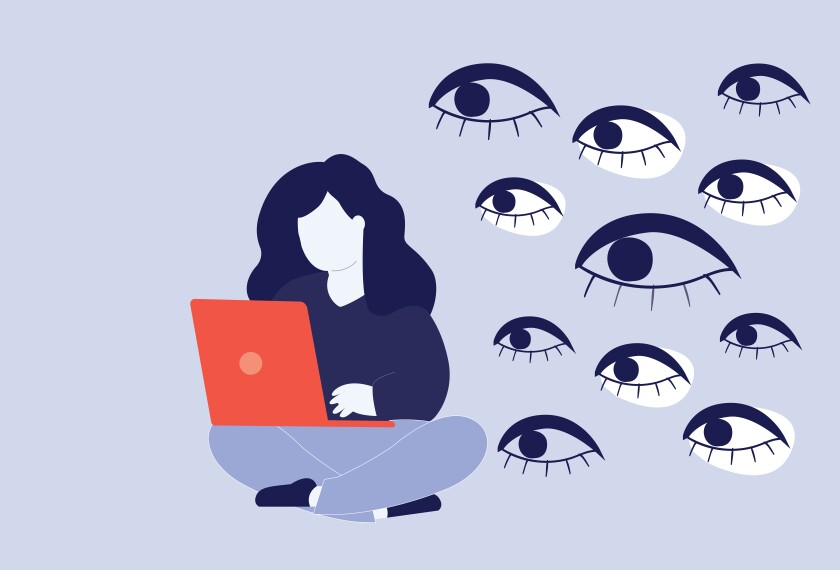Social Media Privacy: How to Take Control of Your Digital Footprint
Social media privacy is one of the most critical challenges we face in today’s digital world. As our online lives become more intertwined with our personal lives, the need to protect our data and understand our digital footprint has never been more urgent. As a professional blogger and SEO specialist for RightDecoded, I’m here to guide you through the complex landscape of social media and privacy, offering you the insights and actionable tips you need to protect your personal information and navigate the digital world with confidence.
The Reality of Your Digital Footprint
Every like, share, comment, and post contributes to a vast digital footprint that’s larger and more revealing than you might think. This isn’t just about what you post, but also the data that’s collected behind the scenes: your location, browsing habits, and even your connections. This data, often monetized by social media companies and third-party advertisers, can be a goldmine for cybercriminals and other malicious actors if not properly secured.
To truly understand what’s at stake, it’s essential to grasp Why Your Digital Privacy Matters. It’s not just about what you’re hiding; it’s about control over your own personal information.
The Dangers of Oversharing
While it’s natural to want to share our lives with friends and family, oversharing can expose us to significant risks. Posting photos from a vacation in real-time can signal to potential burglars that your home is vacant. Sharing personal details like your full name, date of birth, or even the name of your first pet can provide the answers to common security questions, making you vulnerable to identity theft. Remember, once something is on the internet, it’s nearly impossible to erase completely.
Practical Tips for a Privacy-Conscious Social Media Life
Protecting your privacy on social media doesn’t mean you have to abandon it altogether. It’s about being strategic and proactive. Here are some actionable tips to help you take back control:
- Audit Your Privacy Settings: This is the most crucial step. Social media platforms constantly update their settings, so a one-time check isn’t enough. Dedicate an hour every few months to go through your privacy settings on each platform.
- Facebook: Use the “Privacy Checkup” tool. Limit who can see your future and past posts. Restrict who can send you friend requests and who can find you by your email or phone number.
- Instagram: Switch your account to private so only approved followers can see your content. Be selective with who you accept as a follower.
- All Platforms: Review third-party apps that have access to your account and revoke permissions for any that you no longer use or recognize.
- Be Mindful of What You Post: Before sharing, ask yourself: “How would I feel if this appeared on the front page of a newspaper?” Avoid sharing sensitive information like your home address, financial details, or real-time location.
- Enable Two-Factor Authentication (2FA): This simple step adds a crucial layer of security. Even if someone guesses your password, they won’t be able to access your account without a unique code sent to your mobile device.
- Be Selective with Connections: Regularly audit your friend and follower lists. If you don’t know or trust someone, it’s best to unfriend or unfollow them. Be wary of accepting requests from strangers, as they could be fake accounts or scams.
- Understand Location Sharing: Turn off location services for social media apps on your device. If you want to share a photo from a specific place, do it after you have left the location to protect your physical safety.
The Importance of Digital Literacy for Social Media Privacy
True privacy protection goes beyond just a checklist of settings. It requires digital literacy—the ability to understand, evaluate, and use digital technology effectively and safely. In an age of misinformation and social engineering attacks, being digitally literate means:
- Critically Evaluating Content: Learning to distinguish credible information from misinformation, which is rampant on social media.
- Recognizing Phishing and Scams: Being able to spot suspicious links or messages, even if they appear to come from a trusted source.
- Understanding the “Mosaic Effect”: Recognizing how seemingly harmless pieces of information, when combined, can create a revealing picture of your life that could be used against you.
Conclusion
Navigating the social media landscape requires a blend of technological savvy and common sense. By taking control of your privacy settings, being mindful of what you share, and continuously building your digital literacy, you can enjoy the benefits of social media while minimizing the risks. Your digital life is a reflection of your real life, and it’s worth protecting. Stay safe, stay informed, and always be the master of your own data.

